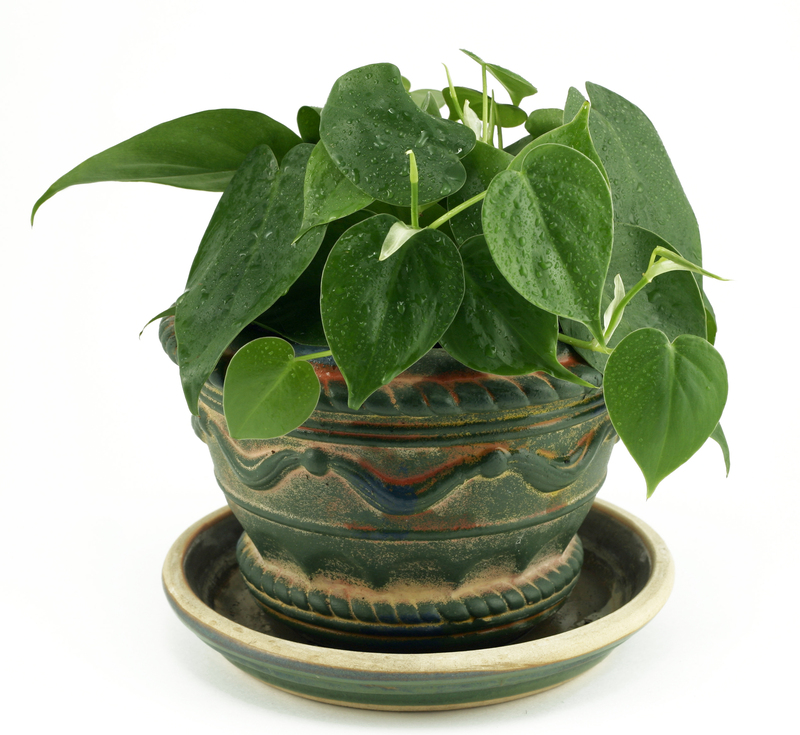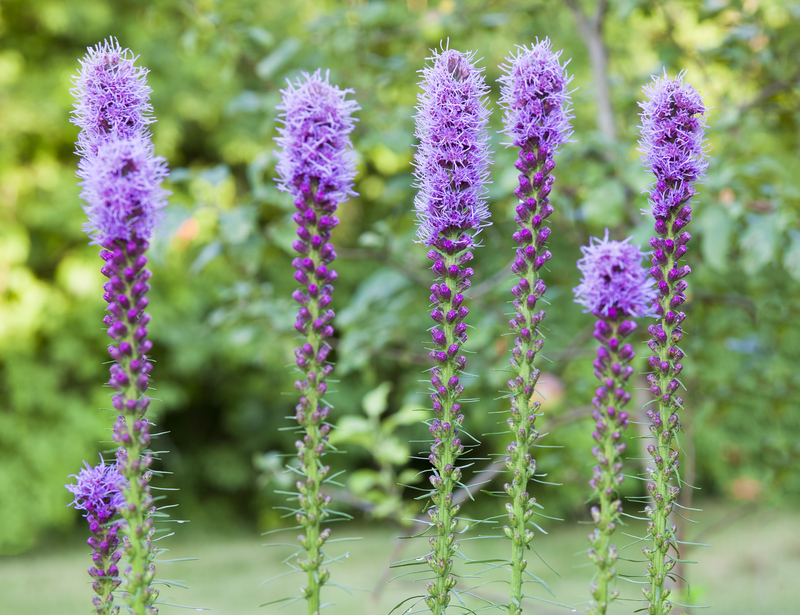Strategies for Preserving Garden Plants Through Winter
Posted on 10/06/2025
Strategies for Preserving Garden Plants Through Winter
As the chill of winter approaches, many gardeners face the annual challenge of safeguarding their beloved plants from harsh conditions. Without thoughtful preparation, winter can wreak havoc on garden beds, killing tender specimens and undoing months of work. Fortunately, by employing smart Winter Garden Plant Preservation techniques, you can help your plants not only survive but thrive once spring arrives. In this comprehensive guide, we'll delve into proven methods for preserving garden plants through winter, covering everything from soil care to frost protection.
The Importance of Winter Plant Protection
Protecting garden plants during the winter months goes beyond maintaining aesthetics; it's essential for sustaining long-term plant health, promoting robust growth in the following season, and preserving the beauty and structure of your garden. Winter's fluctuating temperatures, moisture variations, frost, and cold winds can inflict irreversible damage. Implementing plant preservation strategies is crucial--not just for sensitive or exotic plants, but also for many hardy species.

Understanding Your Plants' Winter Hardiness
The foundation of effective winter plant insulation strategies is recognizing the cold tolerance of your garden's inhabitants. Plants are classified by their hardiness zones, which indicate the minimum temperatures they can withstand. Consult the USDA Hardiness Zone Map or your country's equivalent, and group plants accordingly.
- Tender plants: Examples include dahlias, cannas, and most succulents. These often need special protection or relocation indoors.
- Semi-hardy plants: Such as rosemary, lavender, and some ferns, which benefit from extra insulation during harsh winters.
- Hardy plants: Many perennials and local natives; however, even these appreciate some winter weathering strategies to minimize stress.
Preparing Your Garden for Winter: Essential Steps
Winter garden preparation is a multi-step process. Here's how to get started:
1. Prune and Clean Up Garden Beds
Remove dead leaves, spent blooms, and disease-ridden stems to prevent the spread of pathogens. For herbaceous perennials, cut back foliage to the ground after the first frost. However, leave seed heads on some native species like coneflowers to provide winter interest and food for birds.
2. Deep Watering Before Ground Freezes
A vital yet often overlooked winter plant care tip is to water your garden thoroughly before the ground freezes. Hydrated roots fare better against winter desiccation. Aim for deep watering sessions in late autumn for trees, shrubs, and perennial beds.
3. Mulching for Insulation
Applying a generous mulch layer helps moderate soil temperatures, retain moisture, and prevent freeze-thaw cycles that can heave plants out of the ground. Suitable organic mulches include straw, leaves, bark chips, and pine needles.
- Spread 2-4 inches of mulch after the first hard frost.
- Keep mulch 2-3 inches away from plant crowns and tree trunks to prevent rot.
- Mulch containers as well, particularly those remaining outdoors.
Protecting Plants from Frost and Winter Winds
4. Using Row Covers and Cloches
For vegetable patches and tender ornamentals, floating row covers or garden fabric create a warm microclimate. Likewise, individual cloches--bell-shaped covers made of glass or plastic--can be placed over small, vulnerable plants to trap heat.
- Secure row covers tightly to prevent wind from blowing them off.
- Remove covers on warmer days to prevent overheating and allow for air circulation.
5. Wrapping Trees and Shrubs
Young or thin-barked trees, such as maples and fruit species, are susceptible to frost cracks and sunscald. Protect trunks by wrapping them with burlap, tree wrap, or even recycled cardboard. Evergreen shrubs may benefit from a surround of burlap or windbreak fences to shield them from desiccating winter winds and salt spray.
Overwintering Tender and Non-Hardy Plants
6. Bringing Plants Indoors
Some frost-sensitive plants--such as geraniums, tropicals (like hibiscus), potted succulents, and herbs--should be relocated inside before the first hard freeze. Before bringing them in:
- Inspect for pests and treat as needed.
- Reduce watering and avoid fertilizing during the winter dormancy period.
- Place in a cool, bright location: Unheated sunrooms, basements, garages, or windowsills work well for many species.
7. Storing Bulbs, Tubers & Corms
Many summer-flowering bulbs (e.g., dahlias, gladiolus, tuberous begonias) cannot withstand freezing. In autumn, dig up these bulbs, gently clean them, and let them dry in a cool, dark, ventilated area. Store them in dry peat moss or sawdust, and check monthly for rot or shriveling.
Winter Care for Container Plants
Potted plants are especially vulnerable since their roots are more exposed. Here are some practical winter maintenance tips for potted plants:
- Move containers close together and against a building's south-facing wall to maximize heat retention.
- Wrap pots in bubble wrap, burlap, or insulating fabric.
- Elevate pots on bricks or pot feet to improve drainage and prevent waterlogged roots.
- Water sparingly, as dormant plants need less moisture but do not allow soil to dry out completely.
Practical Tips for Common Winter Challenges
Preventing Winter Burn on Evergreens
Evergreens lose water through their needles or leaves year-round, and winter wind can dry them out. To reduce winter burn:
- Water thoroughly in late autumn.
- Mulch deeply around the roots.
- Consider anti-desiccant sprays for conifers and broadleaf evergreens.
- Provide temporary shade using burlap screens if exposed to intense sun.
Managing Snow and Ice Damage
Heavy snow and ice may break branches or crush low-growing plants. To help:
- Gently brush off snow accumulation using a broom (don't shake branches vigorously).
- Tie up upright shrubs, such as arborvitae, to prevent snow damage.
- Avoid using salt near plant areas, as runoff can damage roots and soil structure.
Low-Maintenance Strategies for Busy Gardeners
If time is limited, focus on these simple but effective winter care methods:
- Select native and cold-hardy plants for lower maintenance.
- Apply a thick, organic mulch in autumn and refresh as needed.
- Group tender pots together and cover with row fabric for collective protection.
- Leave ornamental grasses and some perennial seed heads standing for wildlife benefit and to protect crowns.
Long-Term Winter Garden Preservation Strategies
For ongoing success, plan your garden layout with winter resilience in mind. Here are some lasting tips:
- Position sensitive plants in microclimates--near walls, under tree canopies, or where snow naturally accumulates for extra insulation.
- Install windbreak hedges to shield gardens from cold gusts.
- Consider cold frames or small greenhouses for the most valuable or delicate plants.
- Amend soil with organic matter to improve drainage, as waterlogged soil can amplify freeze damage.
Troubleshooting: Recognizing and Addressing Winter Damage
Despite your best efforts, winter may still take its toll. Check your garden in early spring for:
- Heaved plants--gently press them back into soil if roots are exposed.
- Dead or blackened branches--prune back to healthy tissue.
- Yellowed or scorched leaves on evergreens--prune lightly and apply a balanced fertilizer as growth resumes.
Don't rush to remove apparently dead plants; many species will rebound after a few weeks of warmth.

FAQs: Preserving Garden Plants Through Cold Months
-
When should I start preparing my garden for winter?
Ideally, begin cleanup and insulation after the first light frost, but before the ground fully freezes. -
What's the best mulch for winter protection?
Shredded leaves, straw, and pine needles are all excellent. Avoid deep mulching with fresh wood chips, as they can tie up soil nutrients. -
Is it necessary to fertilize plants in winter?
No--most plants are dormant and do not utilize fertilizer during this period. Fertilize in spring when new growth appears.
Final Thoughts: Embrace the Beauty of Winter Gardening
Winter doesn't have to mean the end of your gardening endeavors. By employing the right preservation tactics, you'll significantly boost your garden's health and beauty, ensuring that each new season starts strong. Explore new varieties, learn your garden's microclimates, and experiment with different winter plant care strategies. With a bit of foresight and care, your plants will weather the cold--and reward you richly in the coming spring.
Remember: Every garden--and every winter--is unique. Stay vigilant, adjust strategies as needed, and celebrate the quiet resilience of your winter garden.
For more in-depth winter gardening tips, bookmark this guide and revisit it as the seasons change. Your efforts in preserving garden plants through winter will pay off with lush, thriving borders in the warmer months ahead!



